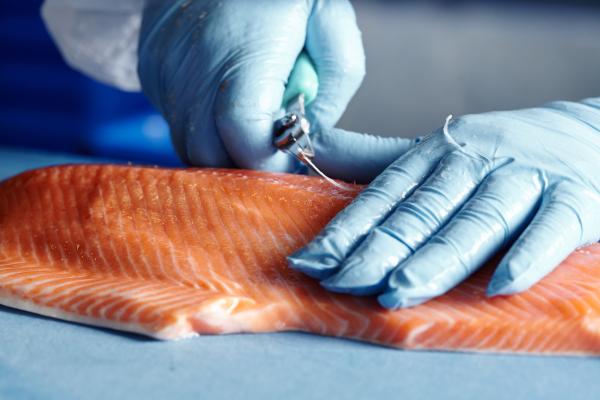Scott Technology and Mt Cook Alpine Salmon have teamed up to automate the removal of pin bones from King salmon.
With more than 30 pin bones in each one, King Salmon fillets have to be deboned by hand. With demand rising and no current alternative to providing a bone out product other than plucking them manually, one by one, New Zealand’s Mt Cook Alpine Salmon is looking to robotics.
Tedious
Scott Technology is a NZ engineering company that focuses on automation and robotics is supporting the project. The two kiwi companies teamed up a year ago to research and develop a way to automating at least some of the manual pin boning task.
“We currently process around 500,000 fish a year through our plant and a growing proportion of our market is looking for bone-out fillets and portions,” said Brent Keelty, Manager of Mt Cook’s Processing operations in a press release. “Pin boning is a tedious and costly task and we have to rotate our staff on the pin bone line to avoid repetitive strain injuries.”
Although automated pin bone removal already exists for Atlantic salmon, but it can’t be adapted for King salmon. New Zealand is the world’s largest producer of King salmon but the quantities are still minute by global standards.
Automated
“We’ve visited the large equipment manufacturers and they have no interest in developing an automated solution for this species. The market is too small for them to invest,” Keelty said.
Seafood Innovations which provides funding support for innovative research and development within New Zealand’s seafood industry has given NZD 500,000 (EUR 299.5 thousand) to the project.
Hand-held
Scott chief executive Chris Hopkins said the new funding will allow the companies to first develop hand-held devices initially.
Then his company “will follow with some more advanced concepts deploying our machine vision technologies to develop a high-resolution 3D view of every fillet and then use algorithms to determine the precise locations of the bones in each fillet. Then the plan is to adapt our robotic automation to remove the bones,” Hopkins said.
The pin boning project is expected to take about 18 months.

